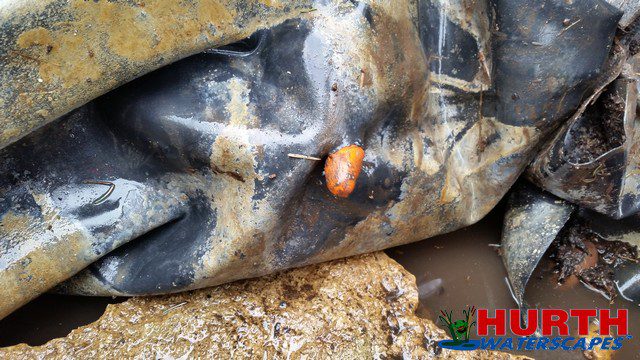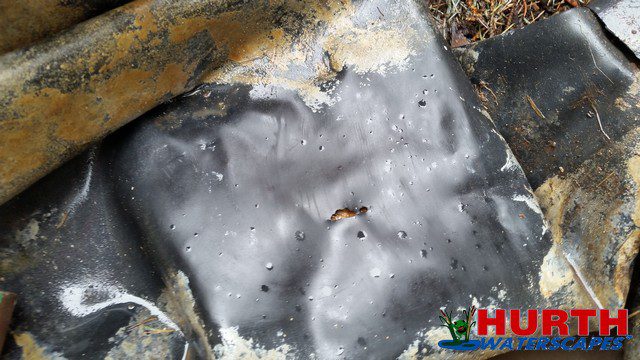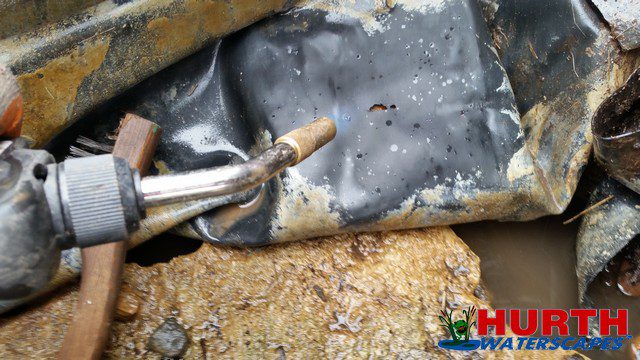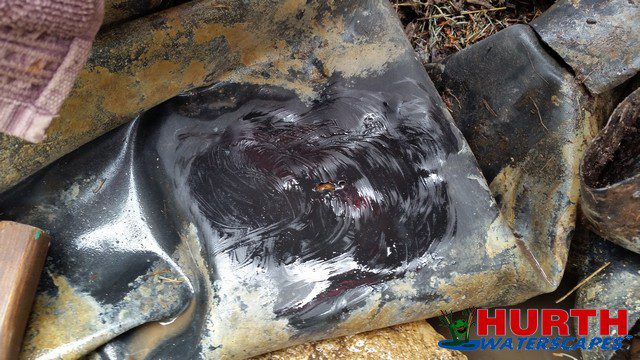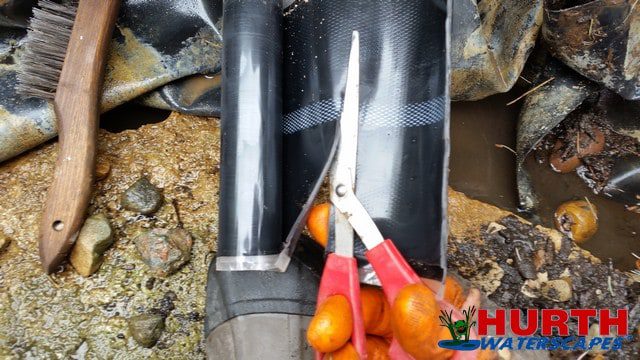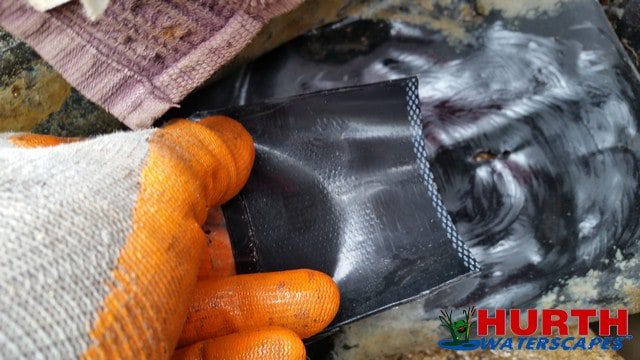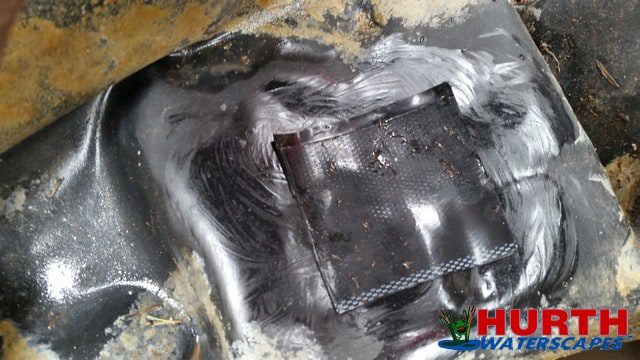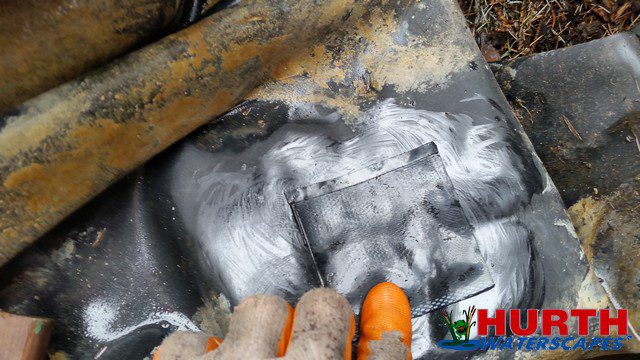Every year we are called upon to find and patch holes in our customer’s pond liners. Finding the holes is the toughest part of this job and I’ll be posting more info on that subject at a later date, but for now we’re going to teach you how to patch the holes once you find them.
How do We get these Holes?
Pond liner holes are most often caused by animals. We see a handful of mouse or chipmunk holes every spring. The critters like to crawl in between the rocks in our streams, wetlands, ponds and waterfalls. They often make nests and chew holes. Most of the holes that I find are on the folds of the rubber, this seems to be the easiest place for them to chew. We have also seen holes caused by muskrats, but these are much less common and much worse. Most of you will likely come across a mouse-hole or two in your time as a pond owner. We usually find them first thing in spring. If you start your pond for the first time in spring and it starts losing water, it is probably a mouse-hole.
How do We Defend?
Mice don’t like to swim, so the holes are in areas where the water is not. The vertical areas of waterfalls and streams, the edges of wetlands above the water line and the vertical edges of ponds are the most common areas. Your best defense against mouse holes is to keep your pond and wetland as full of water as possible over the winter.
Fixing the Hole
Most of the pond owners that I know have ponds that are lined with rubber, so this article will be all about how to patch holes in a rubber liner. The rubber in your pond is just like the rubber in your bicycle tires and patching it requires some of the same tools and techniques.
The first step is to find the hole. It can be small and very hard to find, so you’ll need to really take your time and search carefully. Once you’ve found the hole, you’ll need to clear away enough rocks to allow you to straighten out the folds of the rubber, clean it effectively and patch it. For most small holes this will require an area of approximately 1′ x 1′ minimum.
We use our pond seeming tape to patch holes, but there are pond patch kits on the market or you can use any sort inner tube patch kit that you might use for car, equipment or bicycle tube patching. Always clean the area very well; this is the most important step. Always make sure that your patch is much larger than your hole to ensure a good seal.
#1 Check the vertical surfaces such as below your waterfall.
#2 Find the hole. Look carefully they are often hard to find.
#3 Flatten out the area with the hole.
#4 Clean the area with the hole. Use a wire brush and clean and area at least 2 inches wider than your patch.
#5 Make sure that it is nice and clean. No rust, no lime scale.
#6 Dry the area with a clean dry rag.
#7 We often make sure it is good and dry by using a hand-held torch. This is especially important on cool, humid days.
#8 Make sure it is clean and dry.
#9 Apply the primer or whatever adhesive is used with your patching system. Usually it is very much like the old rubber cement you’d use to patch a bike tire.
#10 Prepare your patch while the primer starts to dry to a light tack.
#11 Apply your patch carefully avoiding any folds or wrinkles.
#12 Press the patch firmly in place using great pressure to ensure full adhesion with no air bubbles.
#13 All done, time to re-stack all of your rock.
Final Measures
Now you can re-stack your rocks and make the area all pretty again. Once you patch a few holes, you will begin to realize that the tighter you stack your rocks and the more you fill open gaps with smaller rock, the safer you are. Whenever you stack pond and stream rock, do your best to eliminate those little rodent hiding spots.
Let’s hope this is a one time fix!



